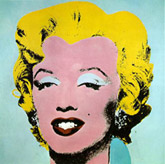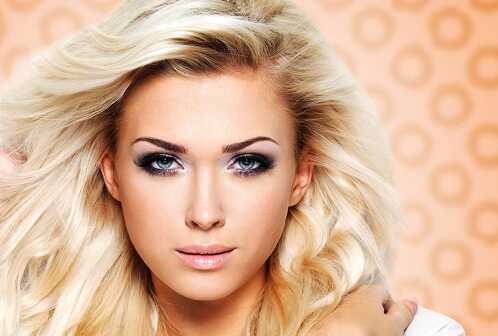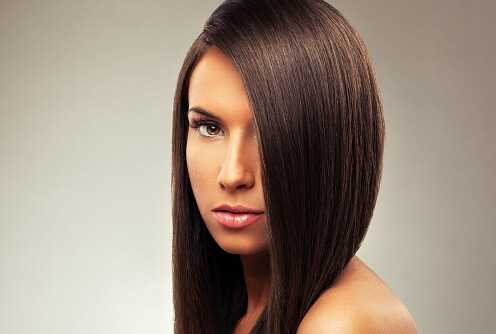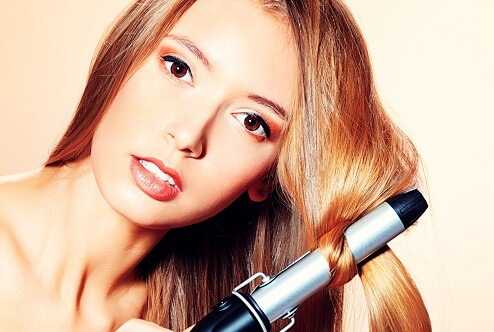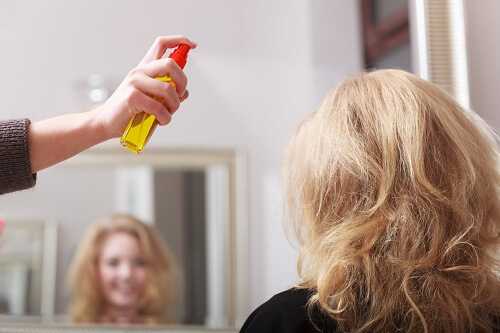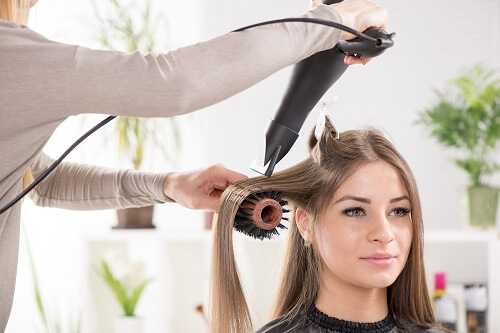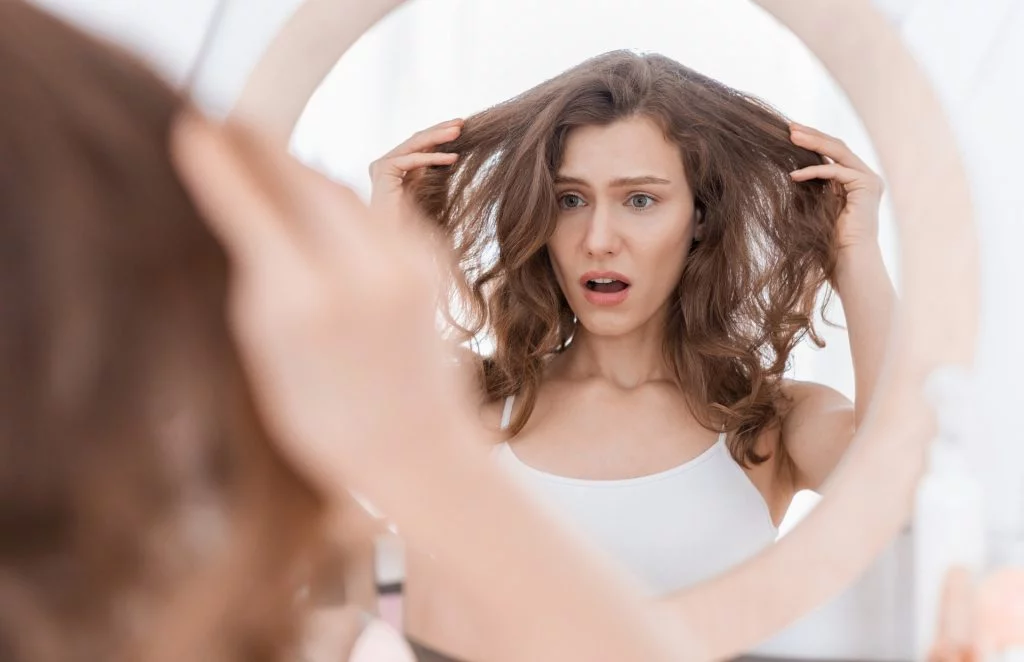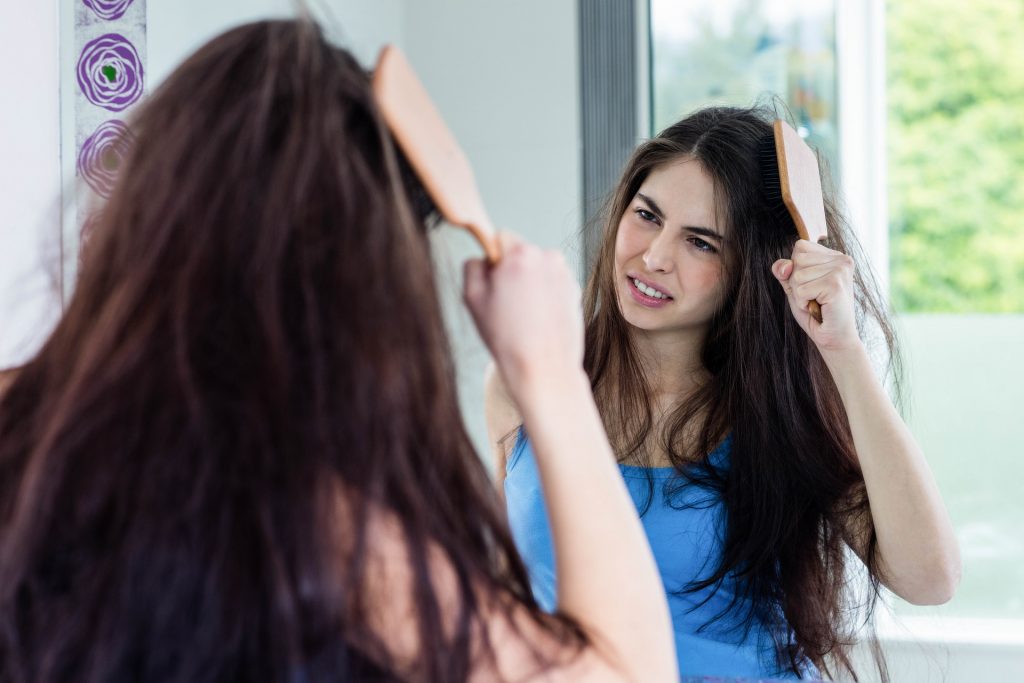Excessive treatment can exhaust hair, robbing it of the color and health it once had. Sick hair often falls into a condition caused by several interacting factors, all of which are created or aggravated by the chemicals used in hair treatments. The list below may include problems you have had and will certainly want to avoid in the future.
1. Oxidative damage from bleach, hydrogen peroxide, and ammonia
To change hair color from a darker to a lighter color, it is necessary to promote oxidation of the hairs with “oxidizing agents” composed of bleach, hydrogen peroxide, ammonia, or all in combination. The greater the change of shade, the greater the possibility of damage. For instance, going from dark to white-blond may cause damage including dryness and brittleness. In severe cases, hair may turn a dead, yellowish shade which is its natural color with all pigment removed. Treatments using bleach should always be done professionally, and any product containing more than 20 percent peroxide should be avoided.
2. Formaldehyde damage
Formaldehyde is essential to many hair treatments and has been successfully used to straighten hair, but it should be used with care. Formaldehyde is a known carcinogen, so exposure should be kept as low as possible; use it only in a place with adequate ventilation. Keratin treatments using formaldehyde tend to also use heat, and when both are excessive, chemical burn of hair or scalp may result.
3. Processing damage
In addition to chemical damage, oxidizing agents cause processing damage. This happens when natural oils and pigments are removed by excessive chemical treatments, allowing tears in the protective layer on the hair’s surface. These reduce the structural strength of hairs and allow moisture loss, resulting in chronic dryness.
4. Temperature damage
The application of external heat is essential to some hair treatments, but it can interact with chemicals and damage hair. Like all parts of the body, hair contains water. When styling tools raise the temperature of hair above 212 degrees F, microscopic droplets of water inside the hairs boil and evaporate. This causes the hairs’ surfaces to bubble and crack, resulting in structural damage including flaking, cracking and loss of sheen. Chemicals from treatments are able to penetrate the hairs, contributing to loss of natural moisture, oils and pigments. The situation is worsened by the fact that many chemical perms generate their own heat by chemical reaction. These should always be applied professionally, as they can get hot enough to break hair shafts if used improperly.
5. Brush damage
No matter how sleek your hair is, using a brush or comb will always cause friction, harming hairs by inflicting physical damage and by allowing chemicals to penetrate the hairs’ surfaces. Breaks in the surface allow moisture to evaporate from within the hair, causing dryness, brittleness and eventual structural damage. Since these are also symptoms of chemical damage, brush damage inflicts an inevitable toll on hair that may already be suffering from excessive treatment. One way to minimize this is by avoiding brushing when hair is wet, since it is weaker and easier to break then.
6. Split ends
Chemical-induced cuticle damage starts a progression resulting in split ends. Brittle cuticles tend to split into smaller shafts, producing a brush-like formation at the hair’s end. Hair suffering this damage will always look frizzy and lusterless, even when it is brushed. Healthy hair will have a minimum of split ends, but ultimately the only cure is a regular touch-up from the stylist.
7. Allergic reactions
Bleaches often have color dyes and shades added, and some users have severe allergic reactions to these. Symptoms range from mild itching to burning and blistering of the skin, and should never be dismissed as “normal.” Remember that no treatment should cause pain or skin damage. If it does, stop using it and consult your stylist immediately. If the condition does not clear up immediately, seek medical attention.
8. Damage from bond breakers (relaxers)
One might think that relaxers are not as hard on hair as perms, since the effect is not so dramatic, but relaxers have their own way to harm hair. They break down natural bonds within hair’s structure to give it greater elasticity and softness, a process requiring professional attention. If these bonds are destroyed, hair will appear limp and lusterless.
9. Using cheap products
Some products deliver temporary results at the expense of hair’s health. Low-end box dyes may be able to turn jet-black to silver-white, but they do it by inducing excessive oxidation and moisture loss. Damage to the scalp and hair cuticles may result. You get what you pay for, so use quality products.
10. False cures
Like all other health-related fields, this one has its dubious cures. Products containing high levels of silicone are sold with near- miraculous claims, and it is true that they will lacquer the surfaces of dry hairs and make them shiny for a limited time. However, the hairs are still damaged, and will look it when the product is washed off. Chemical damage usually is not reversible, and any attempt to do so only makes the problem worse.
Keeping these things in mind will allow you to avoid the common causes of hair damage. Chemical treatments can be used effectively, but only with a healthy dose of caution. Professional stylists are trained in these treatments, so it is always best to consult with one rather than striking out alone.
